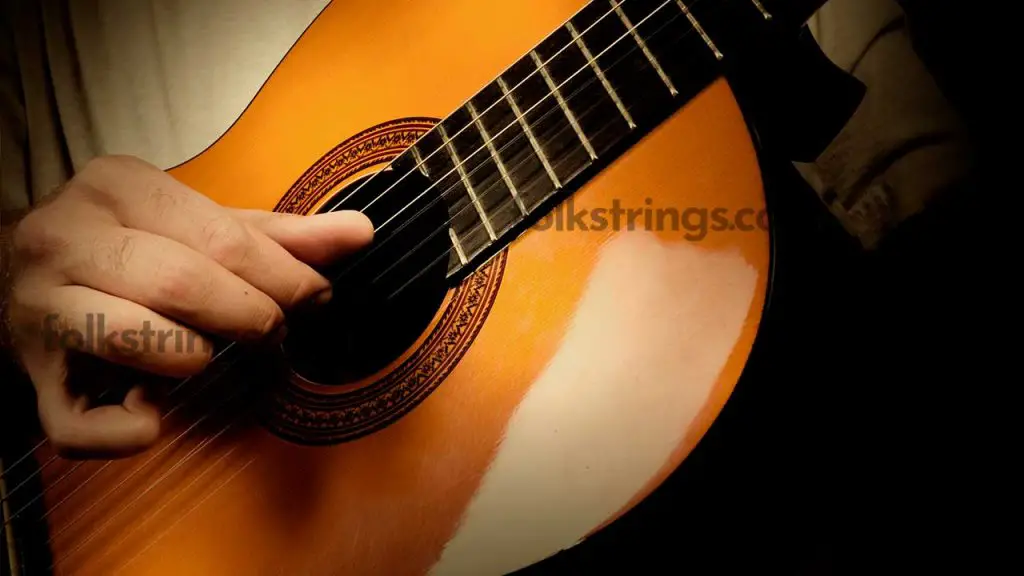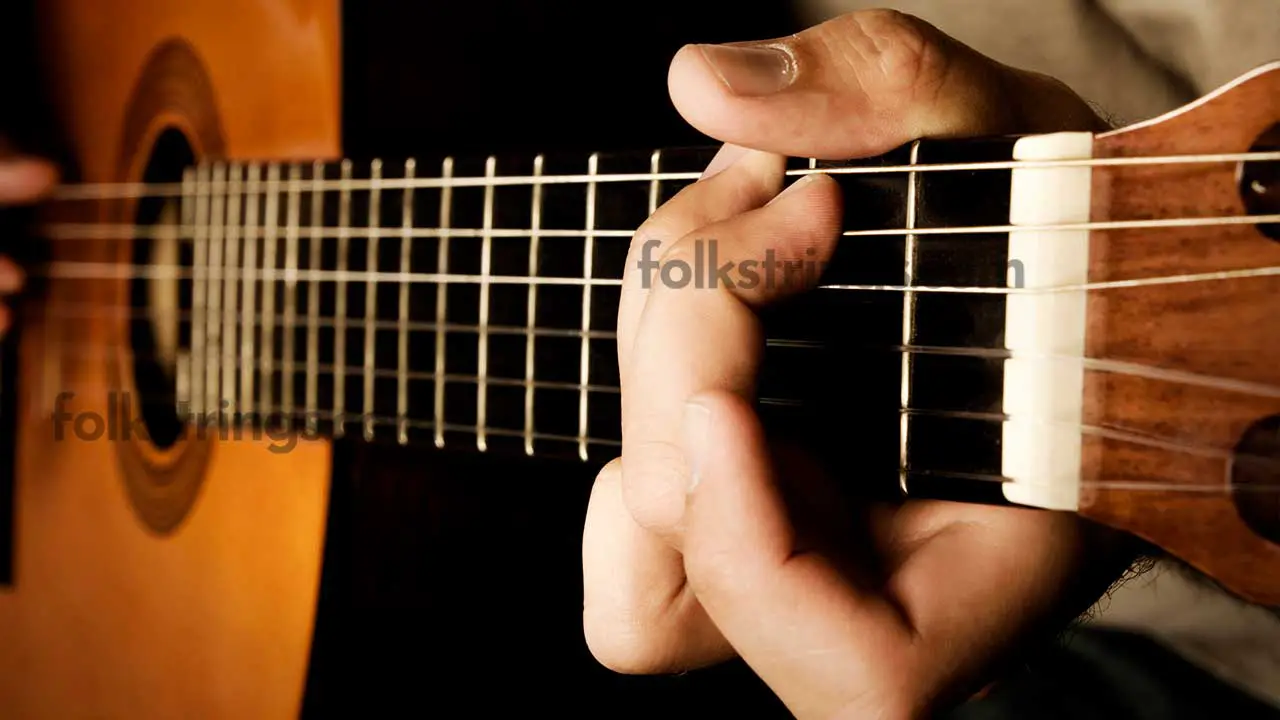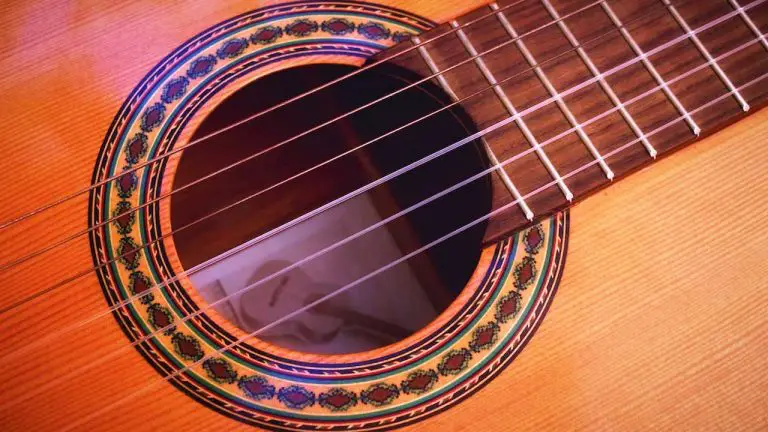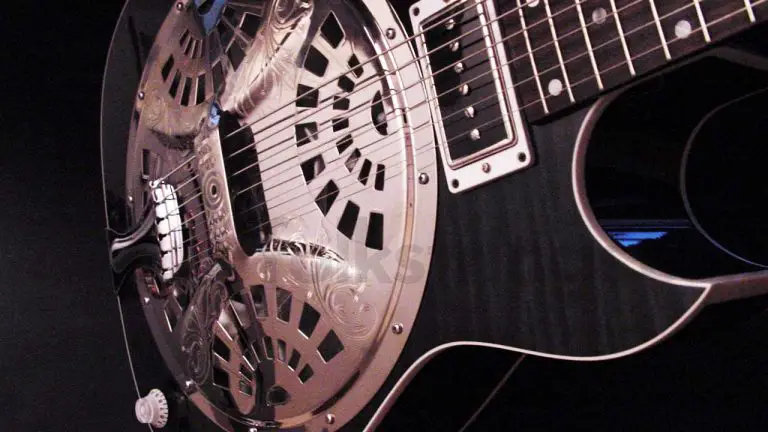Popular Questions About Classical Guitar
Folkstrings.com is reader-supported. When you buy through links on our site, we may earn a small commission.
Is learning classical guitar an item on your to-do list? Classical guitars are perfect for exuding mellow and warm tones, drawing others to listen and relax.
Before you start your journey you’ll probably want to know the answer to questions like, how hard is it to learn classical guitar, how is the classical guitar different from the acoustic and can you put steel strings on a classical guitar?
Continue reading below to know the answers to all these questions and more.
How Hard Is It to Learn Classical Guitar?
Most people find learning guitar hard in the beginning. Like other instruments, you need practice to get the basics of playing a classical guitar.
Suppose we compare the learning process between classical and acoustic guitar, classical wins. Its nylon strings are softer and more accommodating to beginners, letting the newbies practice and get accustomed to its playability to create different sounds.
If you’re aiming to be a classical guitar master, give yourself at least six years to grasp everything there is to know about this instrument. However, you don’t have to be a virtuoso to play and enjoy music with others.
How Does the Classical Guitar Differ from the Acoustic?

As mentioned above, you’ll first notice the difference in these guitars’ strings. An acoustic guitar uses steel strings, while classical ones use nylon. They are softer for the fingers and easier to learn.
Classical guitars also have the following features:
- A smaller body
- A wider fingerboard
- Wider string spacing
- Slotted headstocks
- A 12-fret neck-and-body joint
Its more modern counterpart has:
- A stronger bracing
- Adjustable truss rods
- A 14th-fret neck-and-body joint
What about the sound differences? The nylon strings on a classical guitar create a thicker, quieter, richer sound. Conversely, the steel strings of the acoustic guitar make louder sounds when strung or plucked.
Can You Put Steel Strings on a Classical Guitar?
Realistically, you can place steel strings on a classical guitar. But it’s not recommended. Instead, your classical guitar should never have steel strings.
It’s because steel strings could cause serious damage to the instrument. Note that classical guitars don’t have the same solid bracing acoustic guitars do. They also lack a truss rod, which protects acoustic guitars from snapping at the neck.
Do You Need to Grow Long Fingernails to Play Classical Guitar?
You don’t need to grow your fingernails long to play a classical guitar. It’s thanks to its softer nylon strings with a wider spacing. Your right hand can easily find the strings without long nails. You could even use the pads of your fingers for plucking!
As a testament to its versatility, the classical composer Fernando Sor was against the use of fingernails. Meanwhile, another professional classical guitar player, Andres Segovia, used his nails and flesh to play guitar.
How long you grow your nails will be up to you. Go for it if you’re comfortable with long nails or a nail-and-flesh approach. It helps to practice guitar at different nail lengths to find the best one that suits you.
Author Profile
-
Daniel Johnstone is an English writer with a love for stringed instruments from around the world.
He shares his love for these instruments through his writing for folkstrings.com, a website dedicated to all things related to folk string music.
Daniel's passion for music started at a young age, and he has since become an accomplished musician, playing guitar, cavaco, and recently, the harp.
His dedication to learning and sharing his knowledge of stringed instruments is evident in his insightful and engaging blog posts. Whether you're a seasoned musician or a beginner, Daniel's writing is sure to inspire and entertain you.
When he's not playing music or writing, you can find Daniel exploring new instruments and seeking out new sounds to share with his readers.
Latest entries
 AutoharpApril 4, 2024What Is the Autoharp Made Of: Exploring Its Materials and Craftsmanship
AutoharpApril 4, 2024What Is the Autoharp Made Of: Exploring Its Materials and Craftsmanship AutoharpApril 4, 2024Is Autoharp Easy to Play? Unveiling the Truth for Beginners
AutoharpApril 4, 2024Is Autoharp Easy to Play? Unveiling the Truth for Beginners AutoharpApril 4, 2024What Is an Autoharp Worth? Your Guide to Pricing and Value
AutoharpApril 4, 2024What Is an Autoharp Worth? Your Guide to Pricing and Value AutoharpApril 4, 2024Are Autoharp and Zither the Same Thing? Unraveling String Instrument Myths
AutoharpApril 4, 2024Are Autoharp and Zither the Same Thing? Unraveling String Instrument Myths
Affiliates:
This post may contain affiliate links that at no additional cost to you, the site may earn a small commission. We only recommend products we would use ourselves and all opinions expressed on this site are our own.
Accuracy Advice:
While we strive to provide up-to-date and accurate information, the content in this article may not reflect the most current research or medical guidelines. We encourage readers to do further research and consult with professionals for more personalized advice.
Our Recommendations:
The products and services mentioned in any of our articles are recommended based on our independent research and personal experience. We are not sponsored by any company. We aim to suggest products and services we believe are of high quality and could be beneficial to our readers.





